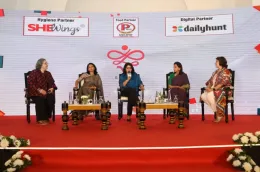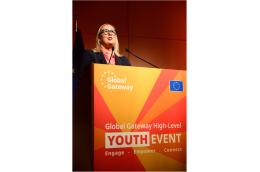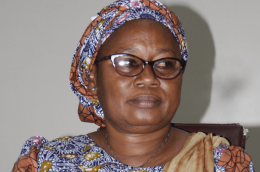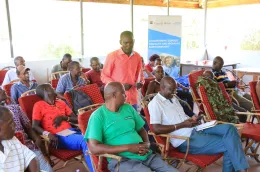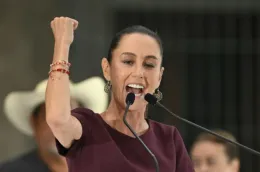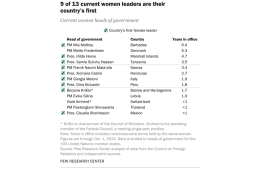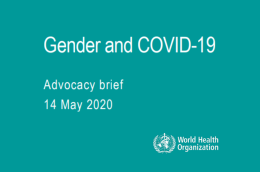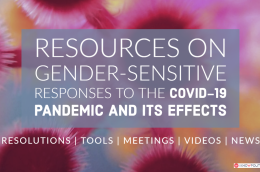Women's Leadership
Main navigation
The We Women Want Festival And Awards by NewsX, was a power-packed session, featuring accomplished women from various fields, sharing their experiences and perspectives on empowerment.
The We Women Want Festival And Awards by NewsX, was a power-packed session, featuring accomplished women from various fields, sharing their experiences and perspectives on empowerment.
Hosted by Priya Sehgal, the panel included prominent voices like Kaveree Bamzai (Senior Journalist & Author), Naina Lal Kidwai (Chair of India Sanitation Coalition & Rothschild India), Shaifalika Panda (Trustee & Founder CEO, Bansidhar & Ila Panda Foundation), and Shama Mohamed (Congress National Spokesperson).
Read here the full article published by NewsX World on 14 October 2024.
Image credits: NewsX World
Distinguished Guests,
Dear friends,
It is an absolute pleasure to be here today with so many bright, passionate, young leaders and changemakers.
You are the driving force behind the progress we've made in recent years.
And what an incredible journey it has been!
As we kick off this Global Gateway High-Level Youth Event, I want to acknowledge the many partners that have been essential in driving this movement forward. Many of you are here today, in person as well as online.
But this is more than recognition.
It's a celebration of your passion and dedication.
Together, we have achieved so much.
Two years ago, with your help, the European Commission launched its first Youth Action Plan in External Action.
It was a landmark moment – the culmination of a collective effort that involved more than 220 international stakeholders, including young people and youth organisations.
Our goals were ambitious:
To engage young people by giving them a voice in policy and decision making.
To empower them with the resources they need to lead sustainable change.
Read here the full speech deliver by Commissioner Jutta Urpalainen published on the European Commission website on 10 October 2024.
Image by Commissioner Jutta Urpalainen
Adamawa State deputy governor, Professor Kaletapwa Farauta, has highlighted the growing need for female leadership to bring about significant change in Nigeria’s political landscape.
Speaking at the 28th Annual National Conference of the National Association of Women in Colleges of Education (WICE) in Yola, Farauta praised the state’s progress in empowering women in politics. She emphasised the pivotal role women can play in leadership, noting, “Nigeria is waiting for great women to make a change in the political arena.”
Farauta underlined the benefits of female leadership, particularly in terms of accountability and effective governance. She also expressed optimism about the possibility of women becoming local government chairpersons soon.
Read here the full article published by the Daily Trust on 9 October 2024.
Image by Daily Trust
In the remote yet strikingly beautiful Nguruman Escarpment of Kajiado County, Kenya, a transformative initiative is unfolding. Here, in a traditionally patriarchal Maasai community, a group of men—known as the Men Champions—has become crucial allies in the fight for gender equality in leadership. These men are part of a broader effort to challenge deep-seated cultural barriers, offering crucial support for women seeking political leadership in a county where progress has been slow.
Despite Kenya’s constitutional requirement that no more than two-thirds of elective or appointive positions be held by the same gender, Kajiado County remains a striking example of gender disparity. In the 2022 general elections, not a single woman won a political seat beyond the legally mandated women representative position, reflecting the powerful cultural and financial barriers women face when attempting to enter the political arena.
Men as Allies: Supporting Women’s Leadership in Politics
The Expanding Spaces for Women's Political Participation in Kenya project, implemented by Uraia Trust with support from UN Women and Global Affairs Canada, is actively addressing these challenges. One of the most significant elements of the program is the engagement of men in supporting women's leadership aspirations. These Men Champions—community gatekeepers and respected elders—are leading peer-learning forums that bring together male and female gender champions to discuss how to create pathways for women to participate in politics and governance.
For generations, leadership in this region has been male dominated, with powerful clans selecting political aspirants. However, as Paul Ole Koisaba, a prominent elder in Nguruman, explains, “We cannot continue to make decisions that exclude half of our population. Our women have the skills and the vision to lead, and we must stand behind them.”
By challenging the traditional norms that have held women back, these men are setting the stage for women to run for office with the full backing of their communities. In doing so, they are not just supporting women—they are building a future where leadership is more inclusive and representative of all voices.
Read here the full article published by UN Women Africa on 5 October 2024.
Claudia Sheinbaum leads a groundbreaking team of women in Mexico's government, achieving significant gender parity in leadership roles across the country.
Mexico has taken a significant step towards gender parity in leadership, marking a historic milestone with the inauguration of its first female president, Claudia Sheinbaum. As she assumes office, the country stands out as a leader in gender representation, surpassing the United States in this regard. Sheinbaum's administration features a cabinet comprised of 50% women and a Congress that is evenly split between men and women.
Claudia Sheinbaum, 62, elected on June 2 with nearly 60% of the vote, is not only the first female president but also Mexico's first Jewish president. She grew up in a politically engaged family, with her mother, Annie Pardo, being a prominent biologist. After earning a PhD in energy engineering from the National Autonomous University of Mexico (UNAM), Sheinbaum became active in politics, serving as head of the environment department under then-Mayor Andrés Manuel López Obrador. She later won the mayorship of Mexico City in 2018.
In a recent statement, Sheinbaum asserted, "Never again should we hear the statement, 'You're prettier when you stay silent.' Those days are over in our country."
Read here the full article published by The Latin Times on 6 October 2024.
Image by The Latin Times
Women currently serve as the head of government in just 13 of the 193 member states of the United Nations. This includes Mexico, where President Claudia Sheinbaum was sworn in as the country’s first female executive this week.
Mexico is one of nine countries where the current woman head of government is the country’s first, according to a Pew Research Center analysis.
Overall, 60 UN member states (31%) have ever had a woman serve as head of government. The first was Sri Lanka, then called Ceylon, where Sirimavo Bandaranaike began her first term as prime minister in 1960. Two other countries – India in 1966 and Israel in 1969 – saw their first women leaders during that decade.
Worldwide, the number of countries that have had women leaders has risen steadily since 1990. The biggest single-year increase occurred in 2010, when five countries – Australia, Costa Rica, Kyrgyzstan, Slovakia, and Trinidad and Tobago – were led by a woman for the first time.
60 countries have ever had a woman leader
Mia Mottley, the prime minister of Barbados, is the longest serving woman currently in office. Mottley has been in power for more than six years.
The title of longest-serving woman head of government in modern history is held by former Bangladeshi Prime Minister Sheikh Hasina. Hasina spent more than 20 total years in power but resigned and fled Bangladesh earlier this year, when mass protests against a quota system for government jobs turned into a more violent movement against her government. (She was also the oldest woman leader, according to a separate Pew Research Center analysis.)
Read here the full article published by the Pew Research Center on 3 October 2024.
Image credits: Pew Research Center
